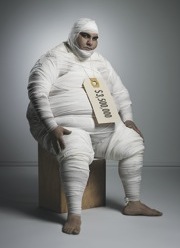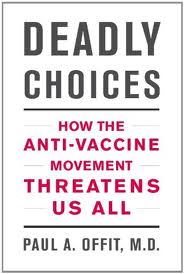February 2nd, 2011 by Mary Knudson in Health Tips, Opinion
No Comments »

 I confess to loving Campbell’s tomato bisque soup. I mix it with 1 percent-fat milk and it’s hot and delicious and comforting, but one of the worst food choices I could make because one cup contains more sodium than I should have in a day. Knowing this, I have already relegated it to an occasional treat. But by the end of this blog post I will do more.
I confess to loving Campbell’s tomato bisque soup. I mix it with 1 percent-fat milk and it’s hot and delicious and comforting, but one of the worst food choices I could make because one cup contains more sodium than I should have in a day. Knowing this, I have already relegated it to an occasional treat. But by the end of this blog post I will do more.
We are overdosing on sodium and it is killing us. We need to cut the sodium we eat daily by more than half. The guidelines keep coming. The U.S. government has handed out dietary guidelines telling Americans who are over 50, all African Americans, people with high blood pressure, diabetes, or chronic kidney disease to have no more than 1,500 milligrams (mg) — or two thirds of a teaspoon — of sodium daily. That’s the majority of us — 69 percent. Five years ago the government said that this group would benefit from the lower sodium and now it made this its recommendation. The other 31 percent of the country can have up to 2,300 mg a day, say the guidelines from the U.S. Department of Agriculture (USDA) and the U.S. Department of Health and Human Services (HHS).
Or should they? The American Heart Association (AHA) recommends that all Americans lower sodium to less than 1,500 mg a day. Excessive sodium, mostly found in salt, is bad for us because it causes high blood pressure which often leads to heart disease, stroke, and kidney disease and can also cause gastric problems. People with heart failure are taught to restrict salt because water follows salt into the blood and causes swelling of the ankles, legs, and abdomen and lung congestion that makes it difficult to breathe.
I saw one recommendation by an individual on the Internet to just drink a lot of water to flush the sodium out of your body rather than worry about eating foods that have less sodium. BAD idea, especially for people with heart problems who need to restrict fluids to help prevent fluid accumulation in their bodies. The salt will draw the water to it.
But cutting our salt consumption by half is quite a tall order for an individual consumer because Americans have been conditioned from childhood to love salt and we on average consume 3,436 mg — nearly one and a half teaspoons — a day. Sodium is pervasive in our food supply. We get most of our sodium from processed foods and restaurant and takeout food, sometime in unexpected places. Read more »
*This blog post was originally published at HeartSense*
February 1st, 2011 by RyanDuBosar in News, Research
No Comments »

Real total direct medical costs of cardiovascular disease (CVD) could triple, from $273 billion to $818 billion (in 2008 dollars) by 2030. Real indirect costs, such as lost productivity among the employed and unpaid household work, could increase 61 percent, from $172 billion in 2010 to $276 billion.
Results appeared in a policy statement of the American Heart Association.
CVD is the leading cause of mortality and accounts for 17 percent of national health expenditures, according to the statement. How much so? U.S. medical expenditures rose from 10 percent of the Gross Domestic Product in 1985 to 15 percent in 2008. In the past decade, the medical costs of CVD have grown at an average annual rate of 6 percent and have accounted for about 15 percent of the increase in medical spending.
The spending is associated with greater life expectancy, “suggesting that this spending was of value,” the authors wrote. But as the population ages, direct treatment costs are expected to increase substantially, even though lost productivity won’t, since seniors are employed at lower rates.
If current prevention and treatment rates remain steady, CVD prevalence will increase by about 10 percent over the next 20 years. The estimate reflects an aging population, and one that is increasingly Hispanic. To prepare for future cardiovascular care needs, the American Heart Association projected future costs. By 2030, 40.5 percent (116 million) of the population is projected to have some form of CVD. Read more »
*This blog post was originally published at ACP Internist*
January 31st, 2011 by Toni Brayer, M.D. in Health Policy, Opinion
1 Comment »

 Author-physician Dr. Atul Gawande has done it again with a well-written article in The New Yorker magazine entitled, “The Hot Spotters.” It deals with the fact that 5 percent of people with chronic illness make up over 50 percent of all healthcare costs.
Author-physician Dr. Atul Gawande has done it again with a well-written article in The New Yorker magazine entitled, “The Hot Spotters.” It deals with the fact that 5 percent of people with chronic illness make up over 50 percent of all healthcare costs.
If we can zero in on providing better preventive care for those people, we can finally get our arms around runaway healthcare costs. How great that you don’t even have to have a New Yorker subscription to read it. Here are a few cliff notes until you get to it:
— In Camden, New Jersey, one percent of patients account for one-third of the city’s medical costs. By just focusing attention on the social and medical outpatient needs of those people, they not only got healthier but costs were cut in half.
— Our current system is unable to reign in costs. We need to completely re-design and fund how we do primary care.
— Charging high co-payments to people with health problems just backfires. They avoid preventive care and end up hospitalized with expensive and life-threatening illnesses that are much worse and more costly. Read more »
*This blog post was originally published at EverythingHealth*
January 31st, 2011 by Bryan Vartabedian, M.D. in Book Reviews, Opinion
No Comments »

 A friend suggested she was tired of hearing about vaccines. Her comment and our subsequent conversation seemed to reflect an important shift in parent sentiment: The conversation about vaccines is beginning to get somewhere.
A friend suggested she was tired of hearing about vaccines. Her comment and our subsequent conversation seemed to reflect an important shift in parent sentiment: The conversation about vaccines is beginning to get somewhere.
While much of this was born of the mainstream media’s newfound realization that the vaccine-autism connection was cooked, some of this is due to the tireless work of those like the Children’s Hospital of Philedelphia’s Dr. Paul Offit who get the story right.
As part of his passionate agenda to expose vaccine truths, he’s published “Deadly Choices: How the Anti-vaccine Movement Threatens Us All” (Basic Books, 2011). For those looking to understand the origins of anti-vaccine sentiment, read this book.
What struck me is the deep history behind the anti-vaccine movement. From Jenner’s smallpox fix to modern-day MMR struggles, Offit draws fascinating corollaries surrounding immunization that seem to defy the generations. Vaccine resistance was not born of Andrew Wakefield, but broader concerns rooted in religion, individual liberty, fear and propaganda. “Deadly Choices” puts the anti-vaccine movement in a historic sequence that reads like good suspense. I couldn’t put it down. Read more »
*This blog post was originally published at 33 Charts*
January 26th, 2011 by GarySchwitzer in Health Tips, Opinion
1 Comment »

 The February issue of Prevention magazine has an article entitled “Surprising Faces of Heart Attack” profiling “three women (who) didn’t think they were at high risk. Their stories are proof that you could be in danger without even knowing it.” No, their stories are not proof of that.
The February issue of Prevention magazine has an article entitled “Surprising Faces of Heart Attack” profiling “three women (who) didn’t think they were at high risk. Their stories are proof that you could be in danger without even knowing it.” No, their stories are not proof of that.
The story is about three women in their 40s. The story varyingly states that the three should have had the following screening tests:
— Advanced cholesterol test, carotid intimal medial thickness test ( CIMT)
— Advanced cholesterol test and stress echocardiography
— Cardiac calcium scoring and CIMT
There’s an accompanying piece: “7 Tests You’re Not Having That Could Save Your Life.”
 I asked one of our HealthNewsReview.org medical editors, Harold Demonaco, director of the Innovation Support Center at the Massachusetts General Hospital, to review the two pieces. As his day-job title suggests, he deals with review of the evidence for new and emerging healthcare technologies. He wrote:
I asked one of our HealthNewsReview.org medical editors, Harold Demonaco, director of the Innovation Support Center at the Massachusetts General Hospital, to review the two pieces. As his day-job title suggests, he deals with review of the evidence for new and emerging healthcare technologies. He wrote:
The section “7 Tests you are not having that could save your life” states: “If you have not had these cutting edge screenings, put this magazine down and call your doctor. Now.”
Wow. While much of the information is correct, it is the context that is disturbing. Suggesting that these tests are essential in everyone is a bit over the top. Some of the information provided for each test is basically correct. However in some cases the recommendations go well beyond national guidelines.
The major issue here is the tacit assumption that tests are infallible, without any downsides and are always a good thing. That is simply not the case. So who should get these tests? Read more »
*This blog post was originally published at Gary Schwitzer's HealthNewsReview Blog*
I confess to loving Campbell’s tomato bisque soup. I mix it with 1 percent-fat milk and it’s hot and delicious and comforting, but one of the worst food choices I could make because one cup contains more sodium than I should have in a day. Knowing this, I have already relegated it to an occasional treat. But by the end of this blog post I will do more.









 The February issue of Prevention magazine has an article entitled “Surprising Faces of Heart Attack” profiling “three women (who) didn’t think they were at high risk. Their stories are proof that you could be in danger without even knowing it.” No, their stories are not proof of that.
The February issue of Prevention magazine has an article entitled “Surprising Faces of Heart Attack” profiling “three women (who) didn’t think they were at high risk. Their stories are proof that you could be in danger without even knowing it.” No, their stories are not proof of that. I asked one of our HealthNewsReview.org medical editors, Harold Demonaco, director of the Innovation Support Center at the Massachusetts General Hospital, to review the two pieces. As his day-job title suggests, he deals with review of the evidence for new and emerging healthcare technologies. He wrote:
I asked one of our HealthNewsReview.org medical editors, Harold Demonaco, director of the Innovation Support Center at the Massachusetts General Hospital, to review the two pieces. As his day-job title suggests, he deals with review of the evidence for new and emerging healthcare technologies. He wrote: 







